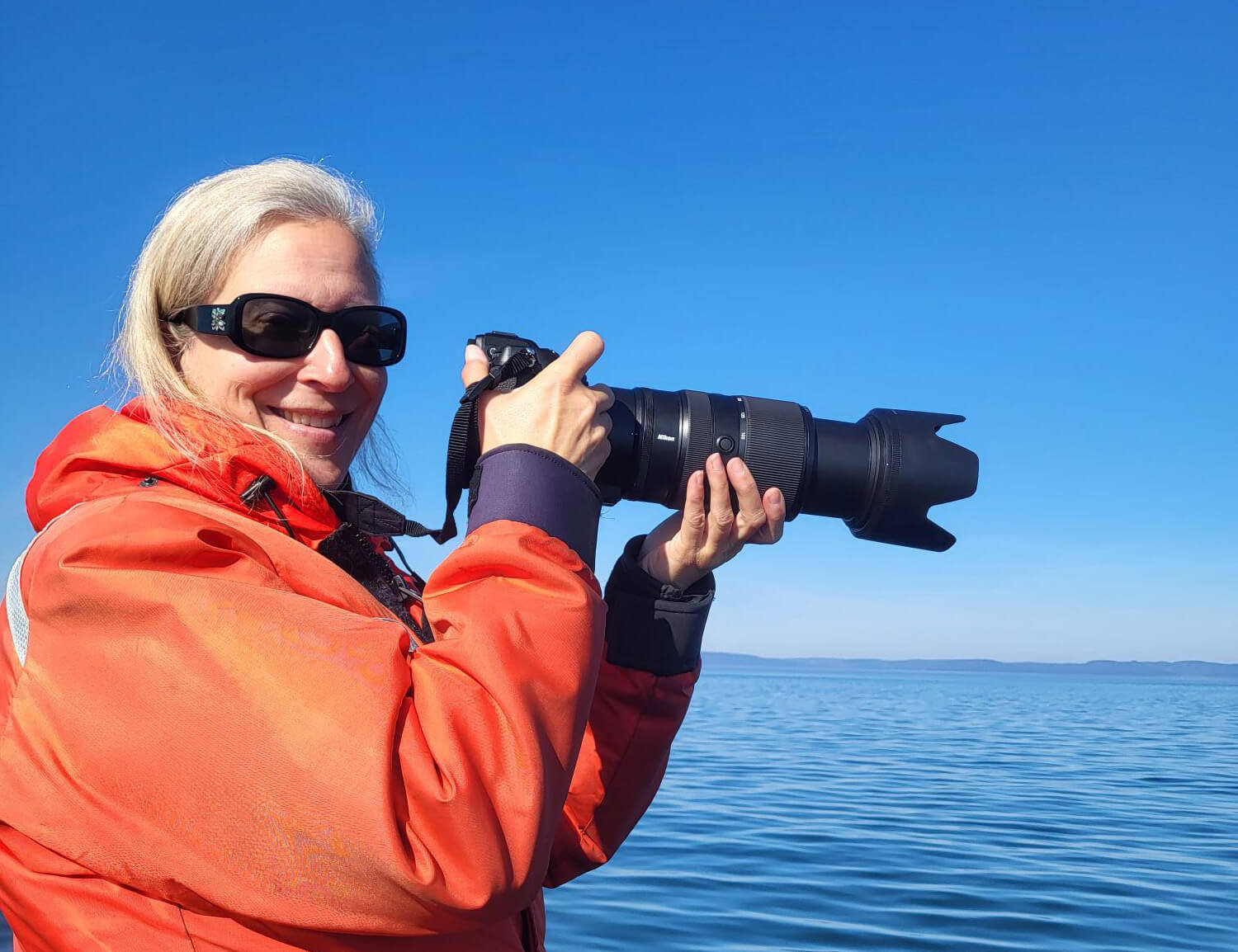A late start but some big reunions…
After a series of mechanical problems, the Bleuvet is finally back on the water this week. Although it is probably the first time we begin the season so late, we’re off to a great start!
Wind from the northeast forced us to make our first field trips into the Saguenay River. Despite the restricted research grounds, we have already been able to reconnect with a few immediately recognizable acquaintances. Regulars Blanche and Yogi were there, as they are almost every year. These animals are well known in the Saguenay. We also saw DL9018 and Annakpok, but it was Marjo who created the surprise!
This female beluga was last seen on July 25, 2014, at Île Rouge. During this last encounter, her newborn, who had been seen with her the previous day, was not around. She was within a group of about ten males who were hustling her in some sort of “sex play”. What had happened to her newborn? Was another female taking care of it? Or did something more dramatic happen to it? Infanticide is a tactic sometimes used by males to accelerate the return of a female’s reproductive state. This tactic, observed in dolphins and chimpanzees, hasn’t however been documented in belugas.
Tuesday, July 5, 2016 was the first time we were seeing Marjo since this event. A young animal was swimming by her side, but the scene happened too quickly to allow us to verify if the animal was a two-year-old young and if it could be the offspring observed in 2014. We will have to be patient and have other encounters with Marjo before we are able to determine whether or not this is indeed her offspring and write a new page of Marjo’s history.
Click on the map to navigate with the Bleuvet and discover the highlights of the week!
IDENTIFICATIONS OF THE WEEK
Marjo – adopted in 2014 by La grande séduction: doctors attending the 10th medical congress on emergency medicine in regional communities, organized by the Haute-Côte-Nord-Manicouagan CSSS
Yogi – adopted in 1988 by Bell Canada
Blanche – adopted in 2014 by the municipality of Tadoussac
Annakpok – adopted in 2014 by Canada Steamship Lines
as well as DL9018, DL9031, DL0393 and DL01390.
The complete list of identified belugas requires meticulous efforts to match individuals, which will be undertaken after the field season.
Property of the  GREMM and the St. Lawrence National Institute of Ecotoxicology, the Bleuvet is a research boat dedicated to the research program on St. Lawrence belugas. Managed by GREMM scientific director Robert Michaud, the Bleuvet crew is composed of Michel Moisan, Tim Perrero and Simon Moisan.
GREMM and the St. Lawrence National Institute of Ecotoxicology, the Bleuvet is a research boat dedicated to the research program on St. Lawrence belugas. Managed by GREMM scientific director Robert Michaud, the Bleuvet crew is composed of Michel Moisan, Tim Perrero and Simon Moisan.





